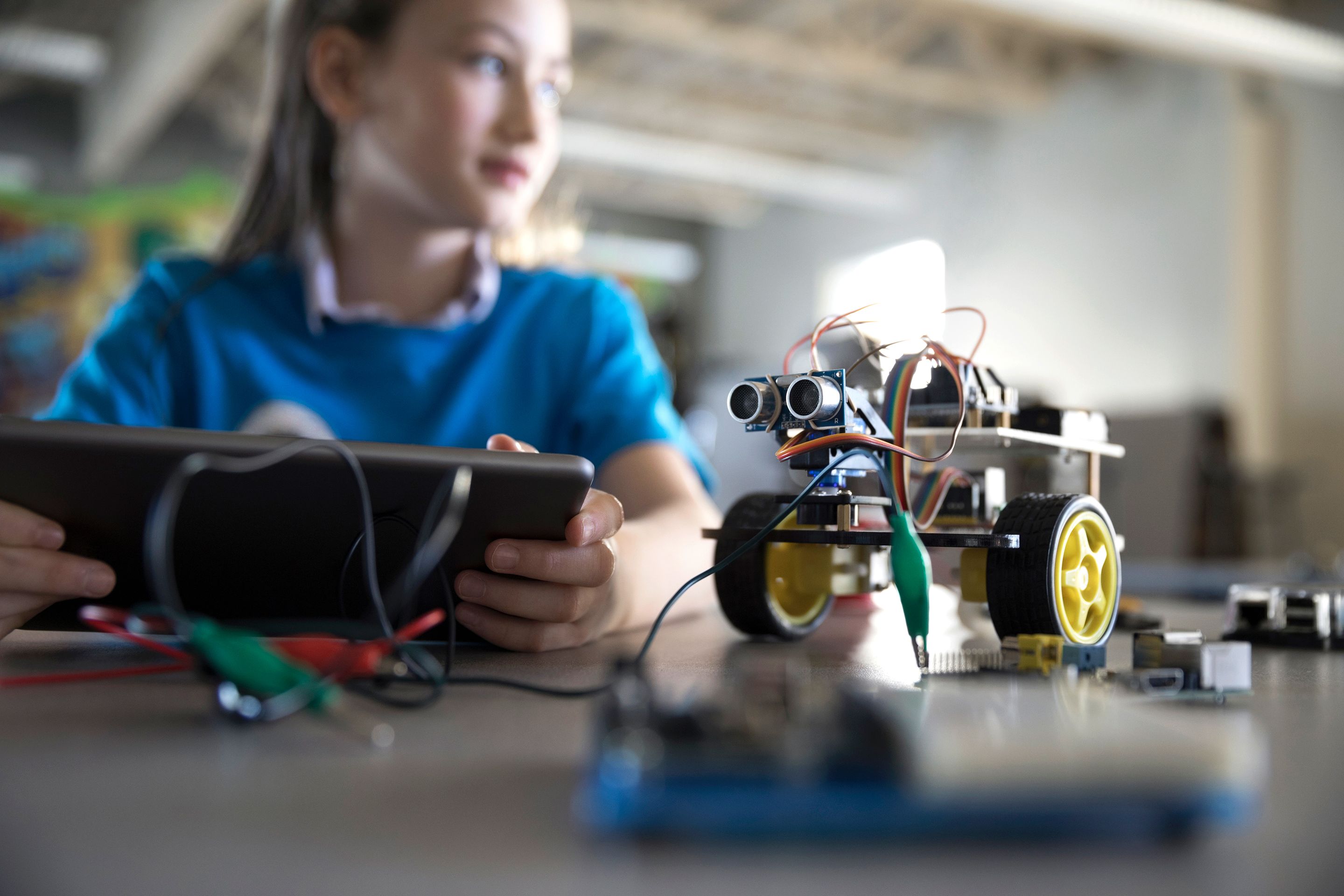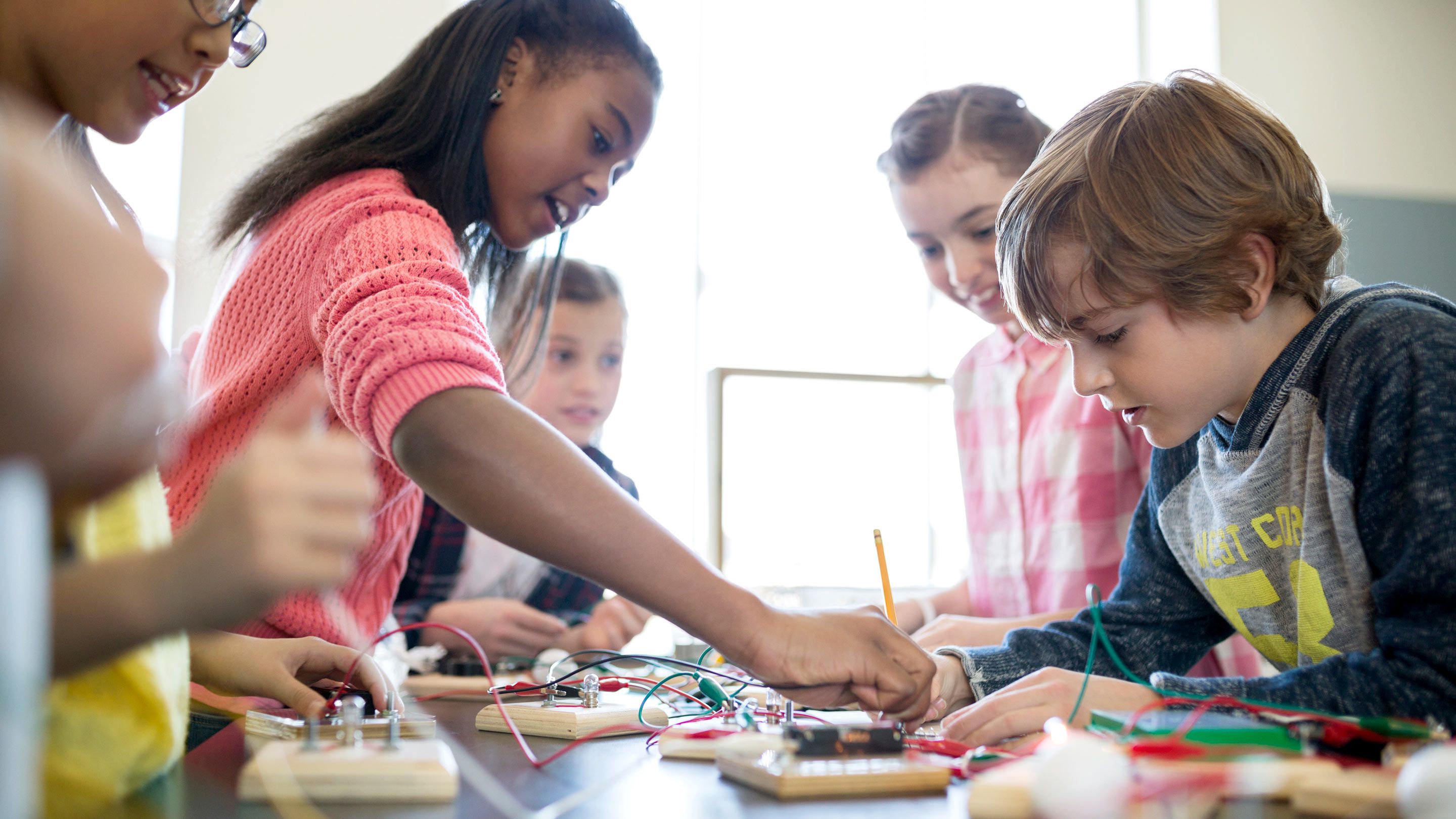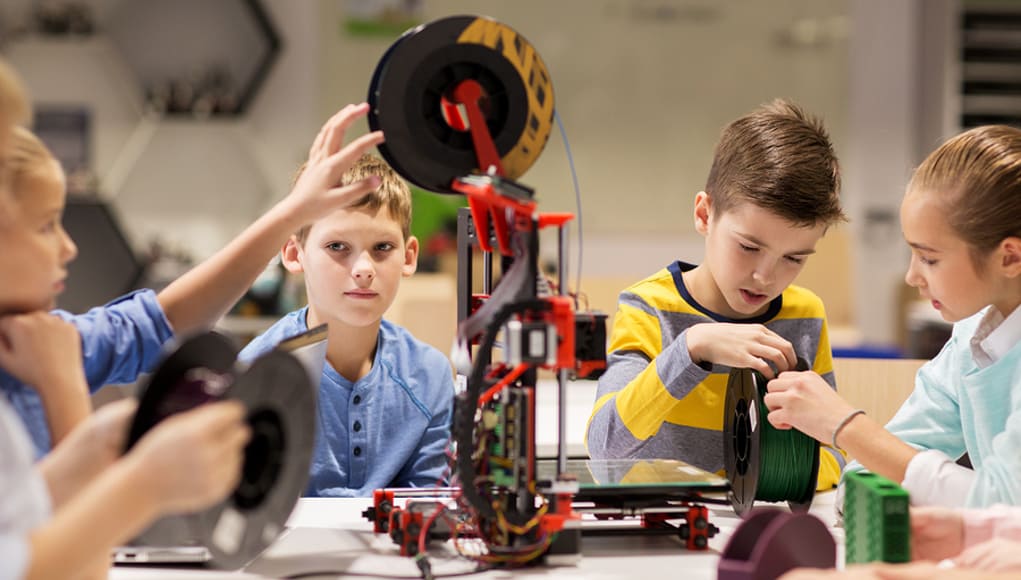A STEM education consultant explains how consistent collaboration among teachers can foster effective STEM-based PBL instruction.

By Anne Jolly
I entered the teaching profession directly from working in a virology lab. Every day our lab team met to discuss what was happening with our experiments testing potential medicines, what we had accomplished, where we were ineffective, and what new work we needed to do. Successful work was a total team responsibility. We learned from mistakes and supported one another as we attempted to develop more effective medications.
Fast forward – my hubby and I moved to another city and I took a position as an “emergency” middle school teacher while waiting for a biology job to open. Daily I faced the most bewildering, complicated, yet amazing kids, and they captured my heart. I realized that teaching was, by far, the most important thing I could do with my life.
I tackled education prep courses and armed myself with a toolkit of teaching strategies. I was ready to deal with the challenges of our rapidly shifting society and changing academic needs. I was wired and eager to prepare my students for a complex, fast-paced, high-tech workforce!
You’re an educator. You probably know what happened next. By the end of the first month, I blinked awake. Looking at my students hard at work on a mundane science assignment, I realized that instead of using revolutionary practices I had fallen back into former teaching patterns. I found it surprisingly hard to put new routines and innovative teaching ideas into operation. Moreover, many of my colleagues seemed caught in the same cycle. Why weren’t we teaching in ways that would work better?

This idea, proposed by Dr. Linda Darling-Hammond, made a lot of sense to me.
Change in instruction begins with learning new ideas, followed by planning, trying out new strategies, getting feedback, and reflecting together with other teachers to learn from experience and refine practice.
Together – that was what I needed! I needed to draw expertise and support from my teaching colleagues, just as when I did from my virology team. This isolated teaching approach didn’t work well for any of us. We needed to band together and collectively develop our capacity to create and deliver instruction that improves students’ learning and lives.
Today, we are on the cutting edge of one of the most important initiatives of this century. STEM – driven by a PBL learning approach – has taken center stage in 21-Century schools. Students need a high-quality project-based learning (PBL) environment that allows them to develop skills and knowledge for solving real-world STEM challenges they will be facing in the workforce. Of course, the obvious problem is – how do teachers deliver quality PBL instruction?
Hopefully, the teachers in your school are solidly on board with STEM-based PBL instruction. However, the day-to-day routines of the school and escalating demands on their time can make taking on a new way of teaching seem overwhelming. How do teachers move from teacher-delivered instruction to help students apply important content concepts to real-world issues, answer complex questions, solve problems, and create high-quality products?
I’m optimistic that you and your teaching colleagues have information and curriculum ideas from vetted programs. That’s a powerful start, but success depends on your continued learning and faithful implementation. What would happen if teachers in your school worked collectively to learn and to master the PBL inquiry techniques undergirding STEM practices and other academic content? When teachers regularly work together to create high-quality, authentic project-based learning they can develop the capacity to create and facilitate learning that truly improves students’ lives. So how would they go about that? Teachers already have meetings – probably more than they need. How would more meetings make a difference, and what would teachers be expected to do?

A STEM-based PBL Learning Procedure
Perhaps the most significant difference between STEM-based PBL meetings and other types of school meetings is that in these meetings teachers would maintain an undeviating focus on studying, learning, and becoming more accomplished PBL and STEM facilitators. These meetings are about teacher professional learning and growth. No discussion of student and school issues here! These meetings are a method of ratcheting up teachers’ skills in using PBL to drive STEM learning. Period. The reason for this is simple: ongoing teacher learning results in better student learning.
Effective meetings generally involve the following elements:
-
Team meetings focus on continually growing teacher knowledge and skills around providing effective, quality STEM-centered PBL.
-
Teams develop a shared goal based on what students need teachers to be able to do better. The goal changes as teachers learn and meet this need, and new needs take precedence.
-
Teams meet on a regular basis – preferably at least weekly – throughout the school year.
-
Team members rotate roles and responsibilities to promote more buy-in and shared duties.
-
Team activities include studying and reflecting on PBL strategies, planning and implementing ways of effectively delivering STEM-based PBL, observing and supporting one another in changing classroom practices, monitoring student responses and progress, and making adjustments as needed.
-
Keep in mind that the key purpose is to provide a way for teachers to become increasingly accomplished and supported on an ongoing basis in delivering STEM-based PBL.
Logistics
Getting teams off to a good start involves taking care of three types of logistics. First, what support structures will school leaders put in place to ensure that your teams have a time and place to meet during the regular workday? Determined teachers will tackle this work in almost any kind of situation, but the best results occur when school leaders support and cultivate a positive environment for teams.
Second, consider where your teachers are now in terms of knowledge, skills, and motivation about STEM-based PBL. It’s okay to be wherever they are. The idea is to support them as they become growth-oriented about their instructional practices.
Third, what organizational logistics must be addressed prior to launching the STEM-based PBL teams? Who will participate? When and where will teams meet? What resources will they need?
Conducting STEM-PBL Team meetings
The process of conducting productive team meetings can be an art in itself. Much has been written about this. I, and many others, have written extensively about how to set up professional learning teams/communities.
Hopefully, I’ve given you some ideas for learning and sustaining a rather massive change in teaching practices. You have better ideas than I do, however. Feel free to chime in and provide additional insights about effective teacher STEM-based PBL collaboration and add to the growing body of knowledge about ways to revolutionize our teaching and learning.

Discover more PBL tools with RobotLAB!
Check our products page and start your robotics lessons with RobotLAB and our learning Platform EngageK12!




